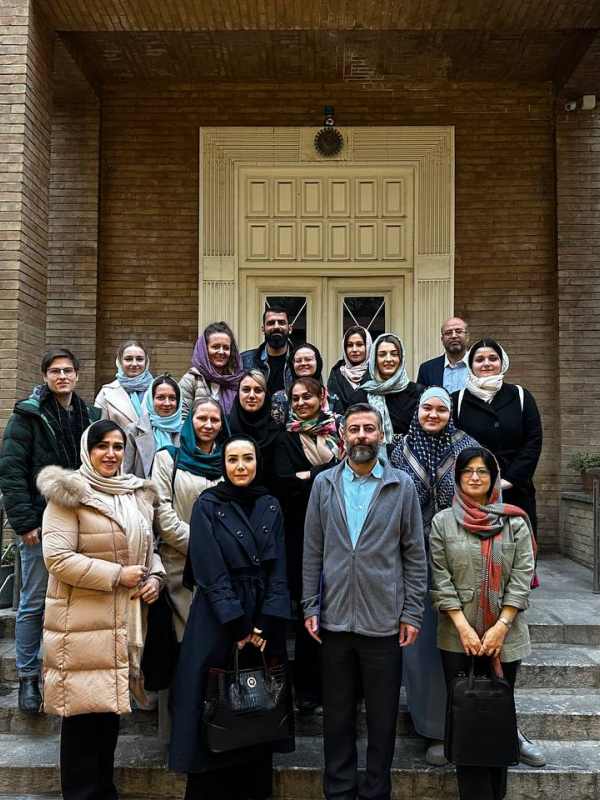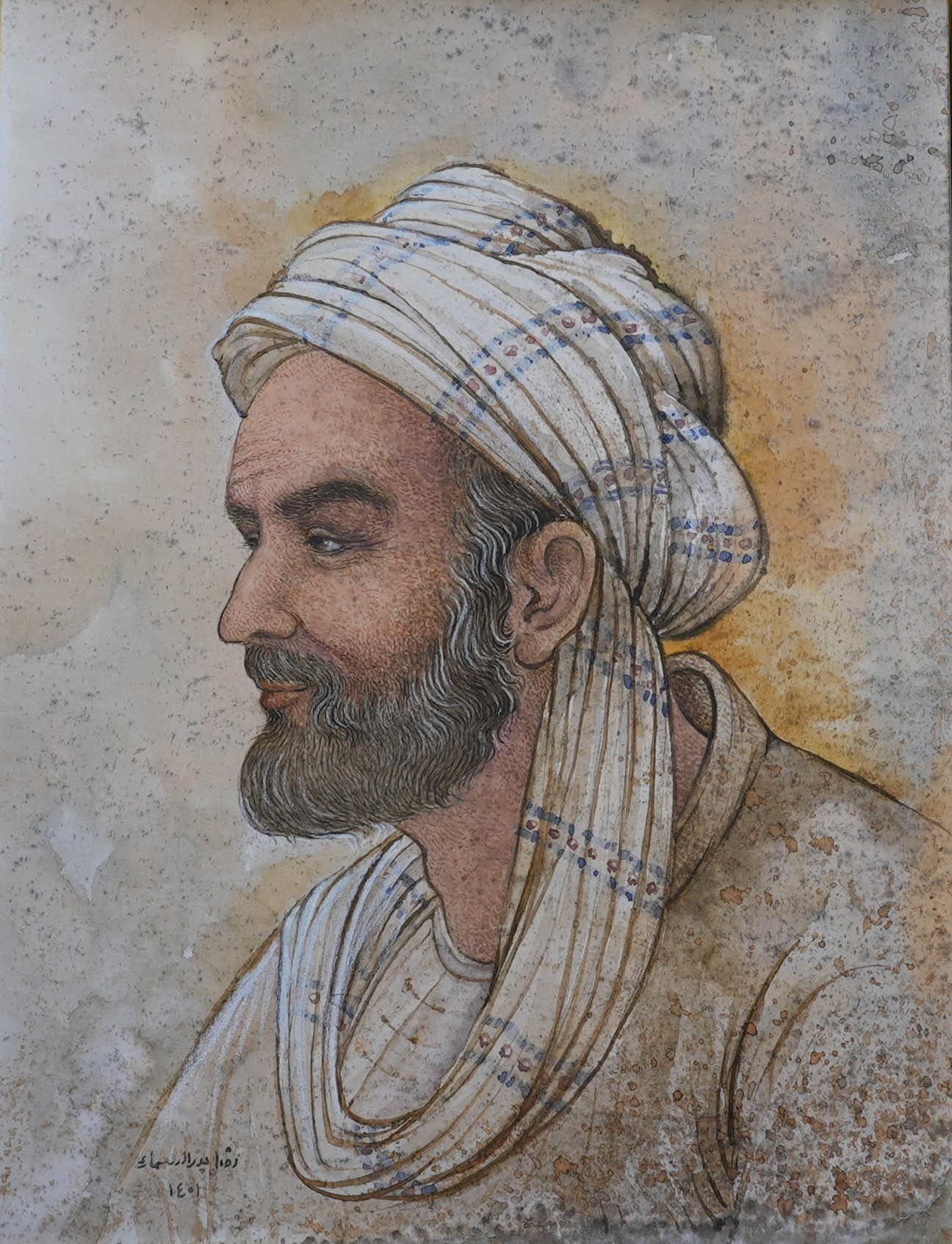Advanced courses on Islamic philosophy and art for students and university teachers were organized with the assistance of Ibn Sina Foundation in cooperation with the Institute of Civilization (Russia) and the Research Institute of Iranian Philosophy. The courses took place form the 7th up to the 19th of December in Iran.
A wide advertisement campaign started in Russian social media, as well as in scientific and educational centers, in November and December 2023. According to the organizers’ demand, those who wanted to participate in the courses had to send their CV and the examples of their recent scientific works to the Foundation. As the result, 11 students and university teachers of philosophy and Islamic studies were chosen for participation. A fascinating program was waiting the participants in Iran.

The first day (thursday, the 7th of December): visiting Qum
During their trip to Qum the participants visited one of the main Shia sanctities, the Mausoleum of Fatimah Maasumeh. Beside its religious significance, this Mausoleum is also a masterpiece of Islamic art and architecture. In Qum the students and the teachers also met an outstanding calligraphist Mr. Tavousi, who explained the meaning of spiritual and religious dimensions of the calligraphy as an art. At the end of the meeting two-hour master-class was presented to the attendants, where they tested such styles as “nash”, “raka‘a” and “nasta‘liq”.


The second day (friday, the 8th of December): one-day trip to Kashan
The city of Kashan plays a special role for those who are interested in Islamic studies including religious, historical and artificial values of the Islamic world. In order that the participants could get more acquainted with different aspects of Islamic architecture and art, one-trip trip to Kashan was arranged by the organizers. The participants visited the historical house of Tabatabaei, the Fin Garden and the Bathhouse of Sultan Amir Ahmad.

The third day (saturday, the 9th of December): travelling to Tehran
Russian students and university teachers travelled to Tehran to listen to lectures arranged specially for them. This day the participants visited the Faculty of Global Studies of the Tehran University. The educational stuff greeted the visitors, and afterwards Mr. Mehdi Sanaei spoke about the development of scientific collaboration between Iran and Russia. One of the participants, Ms. Veronika Birina, presented her research on the nuclear program of Iran. The chief of the Faculty of Global Studies of the Tehran University Mr. Saidreza Ameli became another guest of the program. Ms. Ekaterina Rakova, another participant, spoke about her research work in the area of digital diplomacy between Russia and Iran. After the event students of the faculty had an opportunity to communicate with the Russian guests.



The fourth day (sunday, the 10th of December): visiting the Faculty of literature of Shahid Beheshti University
The deputy chief of the Department of International Relations of Shahid Beheshti University Mr. Abtahi greeted the Russian guests. After that Mr. Shahzad Churaev presented his report called “Miniatures in Qajar Manuscripts of the Poem ‘Yusuf and Zuleikha’”. In the evening Russian guests visited the historical places Tajrish and Imam-zadeh Saleh in the north of Tehran.

The fifth day (monday, the 11th of December): visiting the Research Institute in the Area of Philosophy of Iran
That day coincided with the first day of the International conference “Ibn ‘Arabi, His Heritage and the Significance in the Modern World”. The participants of the courses listened to the chief of the Research Institute in the Area of Philosophy of Iran Mr. Dirbaz, to the scientific secretary of the conference Mr. Pazouki and to professor Avani. Then Ms. Alina Serebryakova presented her research works on Islamic psychology. Afterwards Mr. Amir Maziyar presented his report “The Interrelation between Religion and Art” to the Russian guests. A vivid discussion took place after his speech. At the end of the event Mr. Esmaili showed the philosophic manifestoes of the Institute to the participants. At the same day Russian delegation visited Malik Museum and got acquainted with Iranian and Islamic manuscripts in the Museum’s library. 
The sixth day (tuesday, the 12th of December): visiting the Foundation of Iranian Studies and the University of Arts
On Tuesday the Russian guests accompanied by Mr. Rajabi Devani visited the Foundation of Iranian Studies. At this meeting Dr. Hamid Parsaniya expressed his views about “The Influence of Sadra’s School on Sufi Thought and Behavior”. Then one of the participants, Ms. Tatiana Klyachina, presented her research “The Study of Religiousness of Arab Muslims in Tatarstan”. After then the Russian students and university teachers visited the Tehran University of Arts. Vice-rector for Culture Mr. Rozbahani and head of the Faculty of Applied Arts Mr. Sheikhi attended the meeting. The orchestra of student musicians played their music in front of the Russian guests. The Russian delegation also visited two master-classes on Iranian painting and ceramics on the same day.

The seventh day (wednesday, the 13th of December): visiting the Research Institute in the Area of Philosophy of Iran
That day Ms. Tatiana Korneeva presented her report “Obtaining Paradise in Isma‘ili Religion”. The second report was made by Seyed Jawad Miri from the Research Institute of Humanitarian Sciences and Cultural Studies. His theme was called “Russian Classical Literature and its Influence of Contemporary Iranian Thinkers”. Two scientific presentations also took place that day: thus, the representative of the Academic Faculty of the University of Arts Mr. Mohammad Ali Rozbahani made a report “Wide and Mystical Foundations of Iranian Art”; also the employee of the University of Arts Mr. Hadi Rabii spoke about “Art in the Philosophy of Ibn Sina”. An interesting discussion accompanied those presentations.

The eighth day (thursday, the 14th of December): visiting the Research Institute in the Area of Philosophy of Iran
On that day the Russian guests got acquainted with the scientific presentation “Ibn Sina’s Philosophy of Nature” by Dr. Mohammad Jawad Esmaili, the representative of the Institute of Philosophy. He depicted the intellectual scheme of Ibn Sina’s views and described the most important philosophical works by Ibn Sina. Afterwards Ms. Tatiana Bolshakova presented her research “The Project of Spreading Iranian Culture in Russian Federation”, and another Russian participant, Mr. Mikhailov, presented his work “Rethinking Ideas of Dr. Ali Shariati”. Russian delegation also visited the National Museum of Ancient Iran and Islamic Art of Iran.

The ninth day (saturday, the 16th of December): art of Islamic Revolution
The Russian visitors became the guests of the Research Institute in the Area of Art. Mr. Mohammad Reza Vahidzadeh greeted the participants with a speech about modern art and meeting the West, as well as about problems and advantages of that meeting. After then the employee of the Institute of Islamic Culture spoke about “Cultural History of Iran, Its Intellectual, Literature and Artistic Heritage”. The Russian guests had an opportunity to her acquainted with the paintings of contemporary Iranian artists. Afterwards they enjoyed Iranian music at the Palace of Shahid Avini, including musical presentation by Mr. Saberallah Dadian and Mr. Alireza Beligh. Watching the film “Walnut” by Mohammad Hossein Mahdovian with Russian subtitles became a finish of the cultural program of that day.

The tenth day (sunday, the 17th of December): visiting the Research Institute of Hikmat (Wisdom) and Philosophy of Iran
A speech by a teacher of the University of Science and Culture Mr. Aliasghar Mirzaei Mehr about Iranian painting schools became the first cultural event of that day. Afterwards Ms. Adiliya Elgushaeva presented her research “Perceiving Islamic Art by Contemporary Muslims”. After that presentation the Russian guests listened to a lecture by the teacher of the University of Arts Ms. Esra Salehi “The History of Gilding the Holy Quran in Iran”. The presentation was accompanied by master-classes on gilded painting at Timurid, Sefevid and Qajar eras.
 The eleventh day (monday, the 18th of December): the end of the courses
The eleventh day (monday, the 18th of December): the end of the courses
On the last day of the courses the vice chief of the Institute of Hikmat (Wisdom) and Philosophy of Iran Mr. Ahmad Ghafari Karabakh spoke in front of the Russian guests. The item of his speech was “Interrelations Between Sufism and Shi‘ism in Iran”. After then Ms. Regina Hasmutdinova presented her research on “Islamic Iconography”. The Russian guests enjoyed a presentation of the employee of the Research Institute of Hikmat and Philosophy of Iran Mr. Shahram Pazouki on “Islamic Mysticism in the Modern Iran, Its Rituals and Ceremonies”. A vivid discussion with the auditory took place after the presentation. Finally certificates and gifts from Ibn Sina Foundation and the Research Institute of Hikmat and Philosophy of Iran were granted to the participants.

The twelfth day (tuesday, the 19th of December): return to Russia.




